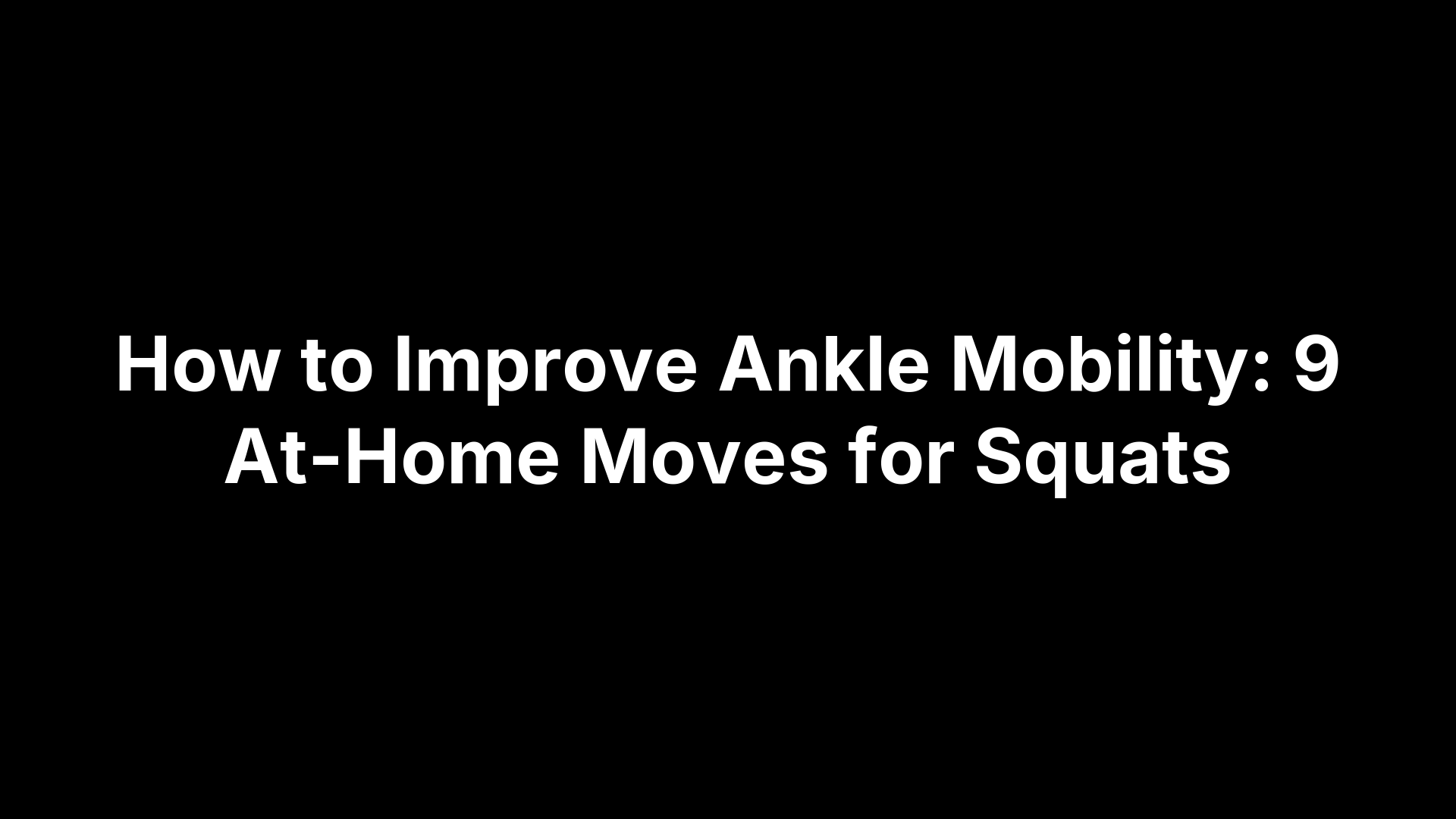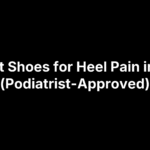If your heels protest every step or your knees ache after a short walk, custom shoe inserts could be the quiet fix you’ve been searching for. Unlike the one-size-fits-all insoles hanging at the drugstore, these prescription devices are molded to your exact foot shape, fine-tuning alignment, distributing pressure, and easing pain from conditions such as plantar fasciitis, flat feet, or arthritis. Expect an investment of roughly $200–$800 per pair, but also expect materials engineered to outlast most off-the-shelf options.
The sections ahead strip away the jargon and sales talk. You’ll learn exactly how podiatrists evaluate your gait, which materials match different activities, why prices swing so widely, and how insurance or an FSA might soften the blow. We’ll compare trusted clinics—including Achilles Foot and Ankle Center—with popular online and retail brands, then outline break-in tips and warning signs that it’s time for a tune-up. Read on and decide whether custom orthotics are the step your feet deserve.
What Exactly Are Custom Shoe Inserts?
Think of custom shoe inserts as a prescription for your footwear. They aren’t a thicker sock liner or a cushy pad you snag next to the cough drops; they’re medical‐grade devices engineered to match the three-dimensional contours and motion patterns of your feet. The goal is simple: create a stable foundation so the rest of your body doesn’t have to compensate.
Definition and How They Differ From Generic Insoles
Custom shoe inserts (also called prescription orthotics or custom footbeds) start with a professional exam and a foot impression. From that data, a lab mills or 3-D prints a shell that mirrors your arches and corrects specific angles. By comparison, generic insoles are mass-produced shapes that feel soft but rarely change biomechanics.
Key differences
- Rigidity: custom shells range from semi-flex EVA to carbon fiber; OTC is mostly foam or gel
- Thickness: fabricated to shoe volume; OTC one-size often bulks up the fit
- Lifespan: custom 1–5 yrs; OTC 3–6 mos
- Price: custom $200–$800; OTC $20–$60
Semi-custom heat-moldable options land in the middle on all counts.
Common Foot and Lower-Limb Problems They Address
- Plantar fasciitis and heel spurs
- Flat feet, over-pronation, or high arches
- Morton’s neuroma, bunions, metatarsalgia
- Shin splints, runner’s knee, IT-band pain
- Low-back or hip discomfort traced to poor foot alignment
Correcting the foot’s position trims the torsion that travels up the kinetic chain.
Signs You Could Benefit From Custom Orthotics
- Persistent arch or heel pain lasting >2 weeks
- Sharp fatigue after standing four hours or more
- Uneven outsole wear or scuffed shoe edges
- Recurring ankle sprains or “rolling” sensation
- Diabetic calluses or ulcers forming under pressure points
- Sports injuries that reappear despite rest
If any box is ticked, a podiatrist’s gait assessment is the logical next step.
How Custom Inserts Are Made
Getting fitted for custom shoe inserts is more medical lab than mall kiosk. The routine below—standard at Achilles Foot and Ankle Center—turns raw biomechanics into a device that fits like a key in its lock.
Physical Examination and Gait Analysis
Appointment begins with a hands-on and high-tech assessment. Your provider inspects foot posture, tests joint range and muscle power, and notes tender spots. A pressure mat reveals load patterns while slow-motion treadmill video pinpoints pronation, heel rotation, and toe-off timing. These findings dictate arch height, posting angles, and padding requirements.
Foot Impression Methods (Foam Box, Plaster, Digital Scans)
With biomechanics mapped, the exact shape is captured. Foam boxes are quick but compressible; plaster casts stay accurate for complex deformities. Most clinics now favor 3-D laser or tablet scans, generating a digital model within seconds and cutting turnaround from weeks to days.
Materials Used and Why They Matter
In the lab, CAD files drive milling or 3-D printing. EVA offers cloud-like cushion for diabetics; polypropylene balances flex and lifespan for daily wear; carbon fiber feels stiff and feather-light for athletes. Top covers—poron, leather, antimicrobial fabrics—manage sweat. Material choice ultimately steers durability, weight, and price.
Key Benefits Backed by Podiatry
Ask any podiatrist why they prescribe custom shoe inserts and you’ll hear the same theme: measurable, clinically observed gains that extend far beyond “feels nice.” Controlled studies and everyday clinic data show targeted pressure redistribution, better limb alignment, and a meaningful drop in overuse injuries—results generic foam rarely matches.
Pain Relief and Alignment Improvement
Custom shoe inserts act like shims under a wobbly table, steadying the subtalar joint and evening out plantar pressure. For heel-pain patients, research shows a 30–50 % reduction in morning pain within six weeks when inserts are worn at least six hours daily. By off-loading hotspots and guiding the ankle into neutral, they curb micro-tears in the plantar fascia and calm irritated nerves around bunions and neuromas.
Enhanced Athletic Performance and Injury Prevention
Runners, basketball players, and golfers often gain a small but crucial efficiency boost. Correcting over-pronation trims energy loss during push-off, translating to fresher calves late in a race. At the same time, balanced foot strike lowers incidence of shin splints, stress fractures, and Achilles tendinopathy—issues that sideline athletes more than any shoe brand mismatch.
Long-Term Joint Health and Posture
When the foot sits properly, the kinetic chain stacks correctly: knees track over toes, hips stay level, and the lumbar spine avoids compensatory tilt. Over years, that alignment may slow cartilage wear in arthritic knees and reduce low-back flare-ups. Diabetic users also benefit; evenly dispersed pressure can cut plantar ulcer recurrence by up to 50 %, keeping wounds—and hospital stays—off the scoreboard.
What Do Custom Inserts Cost in 2025?
Sticker shock is normal the first time you price custom shoe inserts, but context helps. The dollar figure reflects clinical expertise, precision manufacturing, and after-sale tweaks—three things you rarely get from a $20 gel pad.
Price Range Overview (Clinic vs. Online vs. Retail Kiosk)
- Podiatry or sports-medicine clinic: $300–$800 per pair, bundled with exam, fitting, and follow-up visits.
- Online direct-to-consumer kits: $150–$400, using a mail-in foam box or phone scan; remote podiatrist designs the device.
- Pharmacy or big-box kiosk (semi-custom): $60–$120 for pressure-mapped inserts you take home immediately.
What Drives the Cost? (Assessment, Lab Work, Follow-Up Adjustments)
Professional chair time, gait analysis tech, and HCPCS-coded paperwork add front-end expense. On the back end, CAD design, premium materials, and U.S. lab fabrication raise the bill. Clinics usually include free grinding or top-cover swaps for 60–90 days—service online vendors may charge extra for.
Are They Worth the Investment? Cost-Benefit Examples
Swap a $50 OTC insole every four months and you’ll spend $150/year. A $450 polypropylene orthotic lasting three years averages $150/year—with fewer co-pays for plantar-fascia flare-ups or physical-therapy sessions. Factor in pain-free work shifts, and most patients find the math tilts toward custom.
Paying for Orthotics: Insurance, FSA, and Medicare
The good news is that the triple-digit price tag doesn’t always come straight out of your pocket. Many private insurers, some Medicare plans, and all tax-advantaged health accounts classify prescription custom shoe inserts as reimbursable medical devices—provided you follow the paper trail.
How to Check Coverage Codes and Requirements
Call the benefits number on your card and ask if HCPCS codes L3000–L3060 are covered under your plan. Insurers usually demand:
- A podiatrist’s prescription stating medical necessity
- A diagnosis code (plantar fasciitis, diabetic neuropathy, etc.)
- Proof that conservative treatments (stretching, OTC insoles) failed
Medicare Part B will consider coverage only for diabetic patients with ulcer risk and requires the same documentation.
Steps to Submit Claims Successfully
- Pay the provider and keep an itemized receipt.
- Obtain the prescription plus CPT/ICD codes from the clinic.
- Complete your insurer’s claim form (or CMS-1500 for Medicare).
- Upload or mail everything within the policy’s filing window—typically 90 days.
Most clinics, including Achilles Foot and Ankle Center, will pre-authorize and file for you on request.
FSA/HSA Purchasing Tips Before Year-End
Custom orthotics count as an eligible expense. Swipe your FSA/HSA card at checkout or submit the receipt later. If your FSA is “use-it-or-lose-it,” schedule the gait exam before December so the lab can bill the current plan year.
Brand and Provider Comparison
Provider choice determines how precise, fast, and durable your orthotics will be—plus how much insurance might chip in.
At-a-Glance Comparison Table
Quick comparison:
| Provider | Cost | Method | Speed | Warranty | Best For |
|---|---|---|---|---|---|
| Achilles Foot and Ankle Center | $400-$700 | 3D scan | 7-10d | 90d tweaks | Complex pain, insurance |
| Foot Levelers | $300-$600 | 3D scan | 10-14d | 1y remake | Posture correction |
| Foot Solutions | $250-$500 | Foam box | 7-14d | 60d fit | Walk-in retail |
| Upstep | $189-$299 | Mail foam | 14-21d | 6m | Budget custom |
| Corefit | $59-$119 | Heat mold | Same day | 30d return | Occasional wear |
| SOLE | $55-$95 | Oven mold | Same day | 90d | Eco hikers |
| Tread Labs Custom | $225-$325 | Phone scan | 14d | Lifetime shell | Long-distance runners |
| Dr. Scholl’s Kiosk | $60-$80 | Pressure plate | Immediate | None | Quick relief |
In-Clinic Providers (Achilles, Foot Solutions, Foot Levelers)
Full exams, real-time adjustments, and insurance billing justify the higher sticker price.
Online Direct-to-Consumer Brands (Upstep, Corefit, SOLE, Tread Labs)
Mail-in kits lower cost, but you sacrifice hands-on gait checks and easy refits.
Pharmacy Kiosks and Retail Options
Kiosks are instant gratification—great for mild aches, lousy for complex biomechanical issues.
Pros and Cons Summary of Each Category
Match the method to your needs: accuracy for chronic pain, convenience for temporary soreness.
Getting the Most Out of Your New Inserts
Your new inserts only pay dividends if you ease into them, match them to the right shoes, and keep an eye on wear and tear.
Correct Break-In Schedule and What to Expect
Begin with two hours on day one, adding two hours daily. Achy muscles are fine; pinching, numbness, or blisters mean see your provider.
Shoe Compatibility and How to Swap Inserts
Remove the stock liner, seat the orthotic heel-first, trim the toe edge if needed. Runners and work boots welcome volume; slim dress shoes usually don’t.
When to Replace or Adjust Your Orthotics
Inspect quarterly: cracks, flattened foam, or renewed pain signal adjustment. Expect EVA 18 months, polypropylene 3 years, carbon fiber 4–5 under normal mileage.
Possible Downsides and How to Troubleshoot
Even well-made orthotics can cause hiccups if fit, usage, or care slips; the fixes below solve most issues quickly.
Discomfort During Break-In and How to Address It
Gradually ramp wear time; thin moisture-wicking socks reduce friction. If hotspots persist past day five, apply moleskin or schedule a free grind-down adjustment—most clinics include it.
Over-Correction and Related Muscle Soreness
New alignment can strain calves, knees, or hips for a week. Gentle stretching and alternating with old insoles help. Sharp joint pain signals over-posting; return for angle shaving.
Maintenance Mistakes That Shorten Insert Lifespan
Machine washing, car-dash drying, and constant wet storage degrade foams and glues. Instead, hand-clean with mild soap, air-dry flat, and rotate pairs overnight.
Stepping Forward With Confidence
Custom shoe inserts aren’t a luxury upgrade—they’re an investment in pain-free movement, better posture, and shoes that finally work with your body instead of against it. When they’re sized, crafted, and broken in correctly, they can outlast bargain insoles many times over while saving you trips to the doctor and days off your feet. Ready to see what precision support feels like? Book a gait assessment with the specialists at Achilles Foot and Ankle Center and step into relief that’s built just for you.






